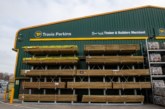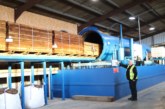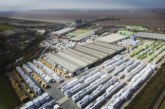
David Hopkins, Chief Executive of the Timber Trade Federation, envisions a profitable, greener future for merchants, in conjunction with colleagues across the timber supply chain.
The COVID pandemic has made many re-focus on what’s important, in life and in business. Rightly, our collective short-term focus remains on the health and safety of family, friends, staff and colleagues. Looking forward, as we begin to return to work, an opportunity exists to re-shape the future — by protecting the climate that we and future generations must live with.
In a recent Financial Times article, investors caring for multi-billion Euro asset portfolios warned investee companies not to renege on their climate change policies and carbon reduction targets. Some eight different asset management groups urged companies to centre their post-pandemic business strategies by focussing on a green economic revival.
The Timber Trade Federation sits uniquely in the supply chain, with our members straddling both forestry and processing at one end through to major builders’ merchants selling timber to builders, joinery workshops and carpenters at the other.
I have asked our colleagues across the wider wood industry for their their views on maximising the business and environmental value of timber’s contribution to a greener economy:
Stuart Goodall, Chief Executive of forest industry body Confor, says that effectively utilising the sales potential for timber products means becoming familiar with the broader arguments in favour of timber as a material. He explained: “We all appreciate that trees absorb CO2 while they’re growing, yet their climate change benefits go much further.
“Timber stores CO2 in its wood fibre for its lifetime, so the wood products you sell will be storing carbon for many years. The third factor is that replacing other building products with timber avoids the emissions associated with producing for example concrete and steel.”
Nick Boulton, Chief Executive of the Trussed Rafter Association (TRA), also emphasises the ultimate recyclability of timber products as part of their sales appeal. He said: “Both trussed rafters and metal web joists use specially designed lightweight engineered steel plates and webs to form the structural joints between their timber members. When the products are finally removed from a structure during renovation or demolition they can be easily dismantled, reused and recycled. For those working with architects and need extra information, the TRA and Wood for Good have produced a Life Cycle Analysis for trussed rafters.”

Looking more closely at the merchant sector, it is often quoted that timber and wood products comprise 20-25% of a general merchant’s turnover. Accordingly, Chris Hayward, Managing Director of NMBS, argues that increasing your knowledge on timber products is essential to marketing them effectively and thereby further growing your sales.
Chris explained: “NMBS is working closely with the Timber Trade Federation this year to bring our merchant members up-to-date information on sustainable timber products. Our series of Timber Topics for merchants, produced for us by the TTF, highlight all the sales-related information that merchants need, from new products and developments to standards, storage and more.
“Sustainability issues are making themselves felt for the first time in the merchant sector, so we need to work closely with suppliers to get the good news out there about timber products.”
Promoting both appreciation and knowledge of timber’s beneficial role in climate change extends throughout the supply chain. The British Woodworking Federation represents around 700 joinery firms across the UK and its CEO, Helen Hewitt, said: “First on the list of our Six-Point Blueprint for Wood is to unleash the potential of the woodworking ad joinery manufacturing sector by ensuring wood is appreciated and valued as the sustainable product of choice for the construction industry.
“The benefit of using wood is even greater than its value in biodiversity terms. For example using Wood Window Alliance window frames, compared to PVC-U units, can save 89kg of CO2e per average family house. That’s the equivalent of driving around 6,500kms in a small family car.”
What is more, our colleagues at the front end of the supply chain, the SME builders who use sustainable timber and products like wood fibre insulation, already recognise the twofold opportunities of a green building revolution.
Brian Berry, Chief Executive of the Federation of Master Builders, remarked: “The construction industry has a key role to play in responding to the dual challenges of boosting growth and tackling climate change. UK buildings are responsible for approximately 40% of energy use and are a key area for reducing carbon emissions.

“The Government’s own figures suggest that 20 million floors, 8 million lofts and 5 million cavity walls are all in need of insulation. Independent research shows that cutting VAT on housing renovation and repair could provide an economic stimulus of more than £15 billion over a five-year period and create thousands of new jobs.”
At the Timber Trade Federation, we are making significant inroads into Government thinking. Our report last November, on ‘How the Timber Industries Can Help Solve the Housing Crisis’, was created with the All Party Parliamentary Group, involving supply chain partners including the Structural Timber Association, and it highlighted the climate benefits for using more wood in buildings.
Overall then, the case for using sustainably-grown timber is strong, and is ready for merchants to harness as house-building sees its vigour return.
Builders’ merchants should work with their TTF member suppliers to gain the knowledge they need to take their rightful place in creating a better climate for business, and a better world climate for their children’s future. We can all work together to shape a greener business revival if we take to heart the words of manufacturing guru Henry Ford, who concluded: “A business that makes nothing but money is a poor business”.
The Timber Trade Federation offers considerable information tailored to the needs of builders’ merchants. Enter https://ttf.co.uk/merchants/ for details









